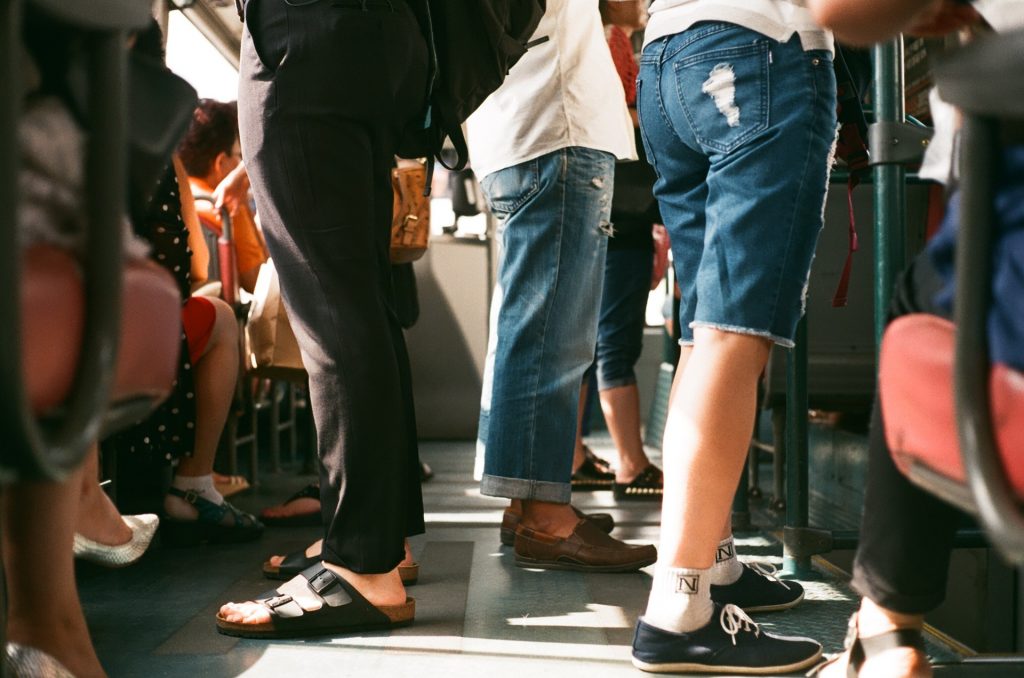




Crowded public places are unavoidable in this time and age. Typically, public places in all over the world breed a lot of uncleanliness, filled with unimaginable grime. The trend for human populations to flock to cities for employment and cultural amenities, among other things, shows no signs of stopping. About 4 billion people, 55 percent of the global population now live in what are considered urban areas. Arguably as a result, indoor and outdoor living environments, particularly for the urban poor, are worsening. Concentration of people can also mean a greater risk of exposure to pathogens and a higher likelihood that infectious diseases will spread. Some viruses have proven to be a pernicious urban problem with dense populations providing a ready conduit for its spread.

For example in airports and in other traffic hubs, people from a vast variety of countries are carrying with them a variety of microbes. A common cold can start in places as far flung as Australia and end up in the UK within 24 hours, spread during moments of close proximity with infected people aboard planes or in crowded areas. The E-Bola outbreak has highlighted the sheer importance of good hygiene practices both in personal and public spaces. Of course, there are various illnesses (both common and uncommon) which spread by air, by direct contact and through contaminated surfaces and objects which can be transmitted between individuals at airports, just as they can in any other areas where large numbers of people co-exist, e.g., shopping centers, schools, offices and public transport system. Toilets in busy areas are one of the most important rooms, where solutions to decrease hand contacts are needed, e.g. hands-free toilet flushes, soap dispensers and taps all contribute to the reduction of disease transmission. In ‘high-traffic’ areas cleaning regimes cannot possibly keep pace with the use. Increased use of physical barriers can also help to prevent the spread of pathogens. Controlling the spread of disease through global travel should be a top priority and airport operations should be augmented to include disease detection and prevention.
People who for example take the public transport are more likely to suffer from acute respiratory illnesses than those who travel in private vehicles. However, a daily commuter is comparatively safer than an occasional commuter, because eventually person ends up building immunity. Typical instructions are to keep washing your hands, carry tissues, stay away from your cell phone, change clothes as soon as you reach home, travel when it is less crowded, reduce human contacts using e.g. smartcards, drink safe water, use air masks and wear gloves.
Many diseases are spread because of cramped conditions and poor ventilation, e.g., immigrant neighborhoods in London have suffer from high rates of aerially transmitted tuberculosis to identify design flaws in their homes and schools that are likely contributing to its spread.
Once confined to hospitals and other health care settings, MRSA cases now crop up just about anywhere that people are in close contact, particularly in environments where hygiene might be less than ideal. There is no one solution to preventing infectious disease, which takes many forms in cities. Risk of outbreaks can rise in urban settings, cities don’t have to be breeding grounds for pathogens. By encouraging the development of proper infrastructure, enabling alternative infrastructures and disease prevention mechanisms in informal and vulnerable places cities will be better prepared to prevent diseases from afflicting their residents, and to fight them when they do.
Indoor air quality (IAQ) measurements for certain chemical (e.g. VOCs and CO2), physical (e.g. PM10 = fraction of particles with an aerodynamic diameter smaller than 10 µm) and biological (e.g. bacteria and fungi) agents are commonly used as indicative parameters for further environmental investigations. Some environmental and hygiene factors such as noxious odors, cleaning routine, abundance of pests and mis- and non-management of waste around living areas are treated as indicators for environmental hygiene quality and signs of the presence of environmental hazards. Environmental allergens, from cockroaches, rodents and dust mites, endotoxin and glucan are some of the common agents found in low-income inner-city areas and are associated with asthma, skin irritations and other respiratory symptoms in children and susceptible adults. Dampness and mold contamination is also an acknowledged risk factor for poor health. Poor ventilation and maintenance of air conditioning systems may degrade occupants’ IAQ and provide breeding grounds for microbial growth.
Ritchie, H. Urbanization. 2018. Published online at OurWorldInData.org. https://ourworldindata.org/urbanization
68% of the world population projected to live in urban areas by 2050, says UN. 2018. https://www.un.org/development/desa/en/news/population/2018-revision-of-world-urbanization-prospects.html
Coltart, CEM. et al. The Ebola outbreak, 2013–2016: old lessons for new epidemics. Phil. Trans. R. Soc. B 2017; 372:20160297. http://dx.doi.org/10.1098/rstb.2016.0297.
As Cities Grow More Crammed and Connected, How Will We Discourage the Spread of Disease? 2016. https://www.newsecuritybeat.org/2016/08/cities-grow-crammed-connected-discourage-spread-disease/
Outdoors - Open Days. 2020. https://www.nurseryworld.co.uk/features/article/outdoors-open-days
Healthcare Settings, Preventing the Spread of MRSA. 2019. https://www.cdc.gov/mrsa/healthcare/
WHO guidelines for indoor air quality: dampness and mould. 2009. ISBN 9789289041683. https://apps.who.int/iris/bitstream/handle/10665/164348/E92645.pdf;jsessionid=544F32D380999592CD930E874FF7B2C3?sequence=1